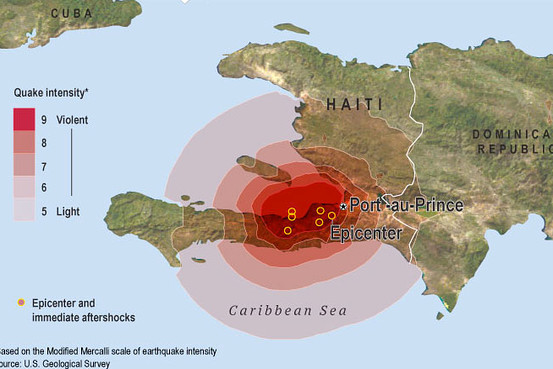Here’s the explanation for the death count and why it was done.
This is in no way meant to contradict the US Government’s statement on the issue.
It is a simple clarification of what they have acknowledged.
I would not post this if they did not first acknowledge that the report was in fact commissioned and does exist.
First, the official US Government Statement on the estimate:
“The U.S. Government, including USAID, remains steadfast in our support of Haiti and its people today, tomorrow and for the long-term. As we stated on May 27, USAID recently received a draft report from an external organization.
We tasked the organization to assess the impact of rubble removal and structural assessment efforts on the return of Haitians to neighborhoods and determine if, and how, we could improve upon our efforts. Any comment on the death toll of the tragic earthquake of January 2010 that affected so many, is beyond the scope of the commission and purely reflects the views of the author.”
Carleene Dei, Mission Director USAID Haiti
As they say in their statement, the USG commissioned the company that hired me to estimate how many people had moved back to their homes. What the US Government wanted to know was what contribution US financed rubble removal programs and household structural evaluations had made to encouraging those people to return.
What no one seemed to realize until the survey was well underway was that to estimate the number of people who returned, we had to know how many of the people who originally lived in the home were still alive. And we couldn’t estimate how many people were still alive if we don’t know how many people died in the earthquake. So we had to include that in the questions and the estimations.
I don’t know why they didn’t see that. I can’t explain that. While it’s true that I designed the project, it was a team effort involving two other PhDs, the company that hired me and their highly professional team of PhDs who reviewed and approved the methods and questionaires, and the USAID project manager, another highly experienced expert in statistical methodology who was involved in every step of the process. Everything, including the questionnaire had to be approved before we went ahead with the study.
When I turned in the first draft of the report it was clear the death toll would be an issue. Our findings conflicted with the Haitian Government’s official numbers. But if we had to use their death count there would be no IDPs. They would all be dead.
Actually, the math would have been even more challenging than that. The figures we got for estimated total number of people who had not returned home was 141,158 to 375,031 (p < .01). That’s for the entire region of the estimated 3 million people impacted by the earthquake. That gives us a midpoint estimate of 258,094. The government’s official estimate of earthquake fatalites was, according to Prime Minister Bellerive on the January 12th 2011 anniversary of the quake, 316,000.
So we would have had an extra 57,906 people in the houses.
And we haven’t even mentioned people in the camps yet.
‘No new death estimate, no absentees.’
So no, they did not commission me to do the death count.
But there was no way to do the job without it.








